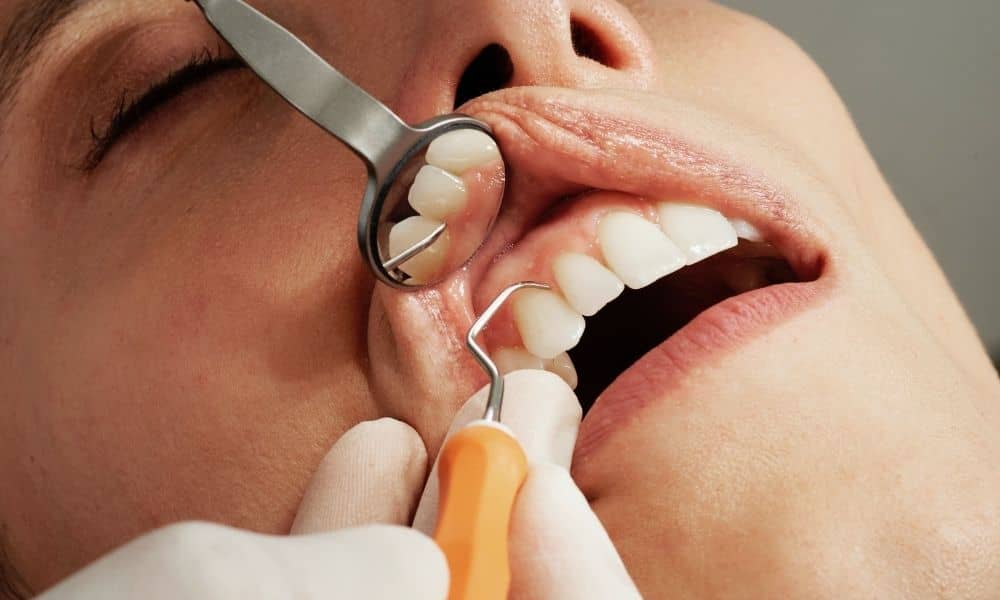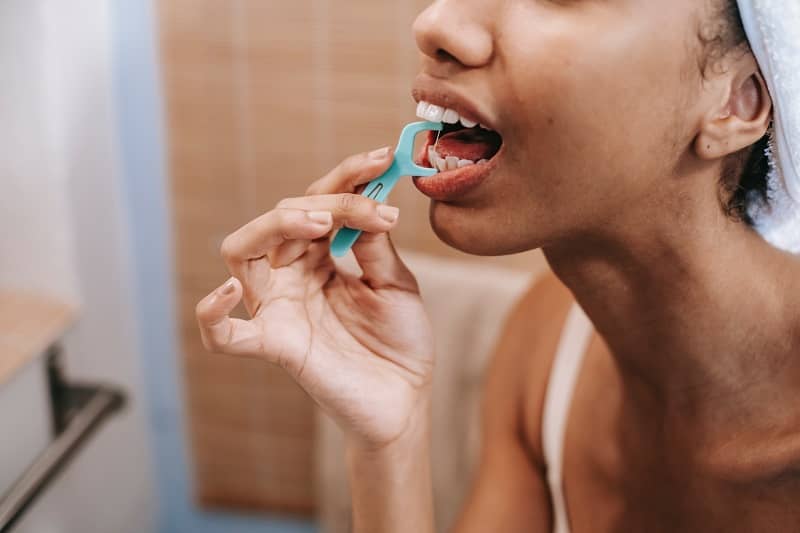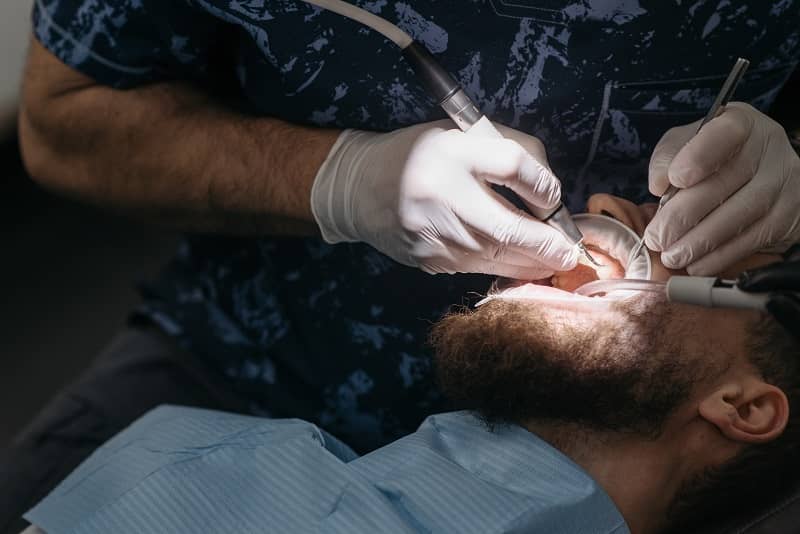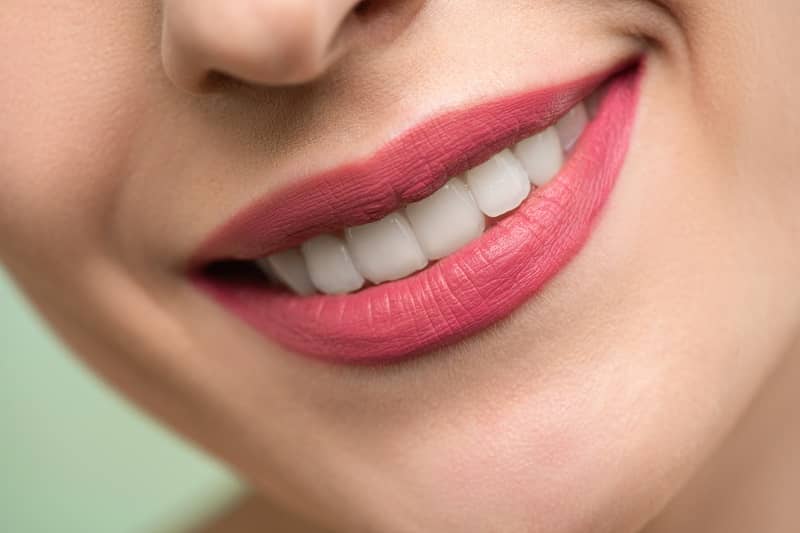


26 Aug Ways to Treat Gingivitis | [6] Home Remedies & Dental Treatments
Gingivitis is usually the start of a hellish cycle that may also cost you your set of pearly whites.
And if you fail to follow a proper oral care regime, guess what, this nightmare might get real while you are well in your prime.
Often leading to bleeding gums and other long-term dental conditions, early signs of gingivitis are not to be taken lightly.
Gingivitis is essentially inflammation of the gums. It is the earliest stage of gum disease and is the most commonly occurring oral malady.
The primary reason for gingivitis is poor oral hygiene that encourages plaque build-up and tartar leading to inflammation and irritation of gums.
If you’re tired of trying sore gums home remedy and haven’t quite got relief, you might be dealing with a severe case.
Usually, the common signs and symptoms of gingivitis include:
- Swollen gums
- Receding gums
- Bleeding
- Bad breath
Adding to this, many people dealing with gingivitis often ignore this problem, which, undoubtedly, worsens the condition after a certain period.
However, if it affects 75% of the global population, is gingivitis curable? And are there any home remedies to know how to cure gingivitis?
Let’s find out…
Can I Reverse Gingivitis On My Own?


Even though getting diagnosed with gingivitis can be terrifying, rest assured that it can be reversed and cured.
You can surely get back your healthy gums on your own without any expensive and painful dental treatments.
Characterized by red, sore, swollen, and bleeding gums accompanied with bad breath, gingivitis can be treated without making an appointment with the dentist if diagnosed at a very early stage. However, you need to put the right effort to prevent it from progressing into severe gum disease.
Moreover, there are a lot of ways in which you can protect yourself and can even reverse gingivitis on your own in some cases:
#1. Step up your oral hygiene
#2. Add gingivitis fighting food to your diet
Make sure that your ultimate goal is to keep your gums healthy and strong by cleaning as much plaque, tartar, and bacteria off your teeth as possible.
However, ways to treat gingivitis depend on how severe the condition is.
With that, here are some things you can try to get rid of gingivitis.
How to Cure Gingivitis? [Home Remedies and Treatments]
Talking about how do you treat gingivitis, well, it depends on how well you have been taking care of your gums or paying attention to your oral hygiene.
You can cure gingivitis through:
#1. Home remedies (only in early stages).
#2. Dental treatment.
To start with, let’s find out how to cure gingivitis in a week at home.
How To Cure Gingivitis (Gum Disease) at Home?



First of all, if you’re experiencing gingivitis symptoms, it’s advisable to see a doctor first to know the severity of the condition.
Now, if you’re concerned that taking care of your gums could be one hell of a task, think about the consequences if you don’t.
Sometimes, you can manage gingivitis at home by following these remedies religiously and also prevent the issue from coming back.
#1. Brush and Floss
Simple brushing and flossing properly every day is the best way to reverse gingivitis.
Brush softly along your gum line and floss using a string or water flosser to clean food that remains between your teeth.
This is the easiest and the most effective way to ensure healthy gums.
Moreover, it’s also suggested to use an electric brush or soft-bristled toothbrush and replace it after every three or four months.
#2. Use Mouthwash
Adding a mouthwash to your oral hygiene routine is a must to reverse gingivitis.
You can ask your dentist about the best mouthwash for gingivitis and use it for 30 seconds or as recommended to kill bacteria, get fresh breath, and cure gingivitis.
Moreover, many also swear by the oil pulling method.
As per studies, massaging coconut oil, sesame oil, and olive oil onto your gums every day for 3 weeks can help reduce the gingivitis causing plaque and bacteria.
However, oil pulling is not much substantiated by robust studies and is likely not a reliable method when you need to address gingivitis immediately.
So, your best bet is to buy a mouthwash that’s specifically made for the task of killing bad bacteria.
#3. Quit Smoking
Smoking is injurious to health for many reasons.
Many people don’t understand that it can not only degrade your lungs but can also take a toll on your gums. It can halt the healing process of reversing gingivitis and other gum infections.
So, if you are a smoker, no matter how expensive treatments or natural home remedies you try, you cannot achieve healthy gums without kicking off the habit.
#4. Reduce the Intake of Sugary Foods and Refined Carbs
It’s obvious that what you eat affects your oral health.
So, instead of consuming sugar, processed foods, drinks, refined carbohydrates, and sticky foods that lead to plaque formation, add nutrient-dense foods to your plate.
To clarify, prefer whole grains, eat more fruits and vegetables, and replace sugary beverages with water.
Biting into gum-friendly foods can also have a significant effect on your gum health.
You can try vitamin-C-rich foods like bell peppers and berries to boost the immunity and collagen that’s essential for healing wounds.
Adding to this, you can also add anti-inflammatory foods containing omega-3 fat like salmon and avocados to reduce the inflammation of gums and fats.
#5. Get Rid Of Dry Mouth
If you’re experiencing less saliva and have been diagnosed with dry mouth, you can use simple strategies like chewing sugar-free gums and drinking more water to find relief.
It is to be noted that a dry mouth means less saliva. And saliva is your body’s mechanism to protect against cavities and gum disease.
Therefore, it’s important to take steps to get rid of dry mouth to cure gum infections.
#6. Try Natural Ingredients
In addition to the above remedies, you can use natural ingredients to cure very mild or early-stage gingivitis.
Try the following natural ingredients with antiseptic and antimicrobial properties to help control gum disease:
- Turmeric paste
- Aloe vera gel
- Coconut oil
- Green tea
- Saltwater
- Baking soda
- Lemongrass oil
- Hydrogen Peroxide
While turmeric has anti-inflammatory properties, aloe vera is found to be helpful in reducing disease-causing bacteria. It also heals the gum after surgery.
On the other hand, green tea restricts the growth of certain bacteria that lead to gum inflammation.
Also, swishing for 30 seconds with a mouthwash containing lemongrass or simply adding 2-3 drops of lemongrass oil in a cup of water can minimize the bacterial plaque level.
Adding to this, there are 2 more effective ingredients that you can use against harmful mouth bacteria. One is Sodium Bicarbonate or simply baking soda that can neutralize the anti-inflammatory acids and, as a bonus, can also reduce stains and brighten your teeth. The second is Hydrogen Peroxide.
Gingivitis cure with hydrogen peroxide is recommended by using the solution containing 3% of hydrogen peroxide only.
Swishing with diluted hydrogen peroxide (diluted with 50% water) can provide relief from minor oral irritation and can also kill harmful gum bacteria.
However, these remedies to cure gingivitis will only work depending on how severe the problem is.
Most often, you’ll have to see a dentist to find that out. And that’s usually the best course of treatment to avoid future complications.
Sadly but truly, this is something you will have to get over your dental anxiety for.
Otherwise, prolonged inflammation can damage the bone leading to tooth loss.
Here’s what you can expect at a dental appointment.
How to Cure Gingivitis at Dentist? [Dental Treatments]
If your gum disease is severe and cannot be tackled with just home remedies, your dentist might recommend certain treatments.
The treatment for gum disease and infection include:
#1. Scaling and Root Planing



This deep-cleaning procedure is often the first step your dentist will take.
It involves creating a healthy oral environment by removing tartar, built-up plaque, and microbial toxins to help gums heal.
It usually takes 1-2 sessions for mild cases and more for severe ones.
So, don’t fear the procedure, and think of the future complications if you don’t do it now.
#2. Gingival Flap Surgery
Advanced gum disease creates flaps between the gums and teeth making them vulnerable to bacteria.
These pockets may require surgery to correct.
#3. Bone/Tissue Grafting
Sometimes to cover the exposed roots because of receding gums, dentists need to perform soft tissue grafting.
And, in other cases, where there’s bone loss due to advanced gum disease, the doctor may advise you to have bone grafting to replace missing bone in your jaw.
The most important thing…
After a professional cleaning, it’s vital to maintain dental hygiene to prevent gingivitis from coming back.
If you are taking proper care of your teeth and gums, you can easily prevent and even cure gingivitis in a relatively shorter period.
How Long Does It Take to Get Rid of Gingivitis?
Gingivitis is a common dental condition and one question that is often asked by the patients is how long it takes gingivitis to go away.
The average time it takes to cure gingivitis is 10-14 days. However, the timeline can change depending upon:
- The severity of gingivitis
- If any surgery is required
- How well you follow your oral health regime
However, if you’re constantly ignoring gum infections or have prolonged gingivitis, there are higher chances of getting periodontitis.
So, how long does it take for gingivitis to turn into periodontitis?
While during the early stages, it takes at least 5 days for gum inflammation.
Moreover, if left untreated, it can progress into periodontal disease within 2-3 weeks.
Hence, proper cure at the early stage only can help prevent turning gingivitis and periodontitis.
How Do You Know When Gingivitis is Gone?



After going through dental cleaning and taking essential steps to cure gum disease, you can see noticeable changes in your gums within a few days.
The signs you need to look at are:
#1. Healthy gums that’s firm and light shade of pink
#2. They fit tightly around the teeth with no visible swelling
#3. Hold teeth tightly in place
#4. Healthy gum pockets should not be deeper than 1-3mm.
#5. Lack of bleeding while brushing
To keep it short, if you’ve pink gums with pockets no more than 3mm deep and have no swollen gums, your gums are healing and turning back to normal.
But, in the process to know how to cure gingivitis, you can never ignore or overemphasize good dental hygiene.
Brushing twice a day with gingivitis toothpaste that’s fluoridated followed by proper flossing and a regular visit to your dentist can prevent and reverse gingivitis.
FAQs
Here are the answers to some of the most common questions asked by patients.
QUES 1: What does gingivitis look like?
Following are the noticeable symptoms of a mild case of gingivitis.
- Tender painful gums
- Bright red or purple gums
- Bleeding gums whilst brushing and flossing
- Bad breath
- Swollen gums
QUES 2: How do you know if gingivitis is getting worse?
If you have been diagnosed with gingivitis and have been ignoring your oral health, the following signs will tell whether your gum disease is getting worse.
- Consistent sore gums and extreme pain are the signs your disease is progressing to periodontitis.
- Receding gum line.
- Continuous bleeding gums.
- A loose tooth is an indication of serious gum disease and bone loss.
QUES 3: How can I get my gums healthy again?
By following proper oral health hygiene, i.e., by brushing twice a day and flossing at least once.
Additionally, using mouthwash for gingivitis, improving your diet, and quitting smoking can undoubtedly help you get back your healthy gums.
However, you can take professional help if the condition is severe.
QUES 4: How long does it take for gingivitis to turn into periodontitis?
It takes around 2-3 weeks for untreated gingivitis to turn into periodontitis.
QUES 5: How does saltwater help gingivitis?
ANS: Saltwater reduces inflammation and helps the gums to recover from the damage done by gum disease.
Saltwater rinse can help remove food particles between the teeth, reduce pain and bad breath as well.
All you need to do is swish a glass of lukewarm water mixed with ½ or ¾ tablespoon of salt for 30 seconds and then spit it out. Do not rinse with water after this treatment.
You need to repeat it at least 2 times a day. However, do not do it regularly for months on end as a saline solution may also affect enamel.
Moreover, if your doctor recommends a particular mouthwash (most likely one with chlorhexidine) to kill off bacteria, use that as advised.
QUES 6: Can saltwater tighten loose teeth?
Saltwater gargles can strengthen the gums and hold the tooth tightly in its place if the damage is minimal.
However, note that if there’s plaque and tartar build-up, just swishing with saltwater will not address the root of the problem. In these cases, first, get it removed and then take preventative actions.
QUES 7: Can coconut oil cure gingivitis?
Oil massage and oil pulling with coconut oil can decrease the buildup of bacterial plaque, can reduce the risk of gum disease, and can even fight gingivitis.
However, it’s not an absolute cure for advanced stages of gingivitis.
QUES 8: What are the stages of gingivitis?
Gingivitis is a periodontal disease that has 4 stages:
#1. Gingivitis
#2. Slight periodontal disease
#3. Moderate Periodontal disease
#4. Advanced Periodontal disease
Notably, gingivitis is the only reversible stage among these.
QUES 9: What do dentists do to treat gingivitis?
Initially, dentists do a professional cleaning and reduce the traces of plaque, tartar, and, thereby, bacterial growth.
In some critical cases, flap surgery and bone/tissue grafting are also performed.
The Take-Home Message
It is not that gingivitis is incurable. In fact, it is the only stage of periodontal disease that’s possible to reverse.
However, it does have some damaging effects on your gum health. And healthy and firm gums have the power to keep your teeth tightly placed and strong.
Thus, the need to get early treatment.
Gingivitis and gum infection treatment with over-the-counter medicated gingivitis toothpaste, mouth wash, and mouth sprays are easily available.
And there’s no need to be scared but just be aware!
Gingivitis is the most common dental condition in the world and just requires early diagnosis to cure and even reverse it.
So, rather than scaring your date away with bleeding and swollen gums, why not swoon them with a healthy smile?



No Comments